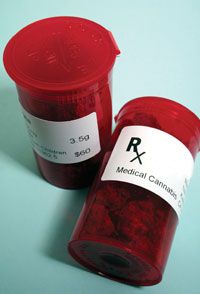Publication
Article
Psychiatric Times
Medical Marijuana: The Institute of Medicine Report
Author(s):
The most rigorous scientific review of “medical marijuana” to date was carried out by the Institute of Medicine in 1999, under the direction of Drs John A. Benson Jr and Stanley J. Watson Jr.1 The institute’s conclusions were considerably more nuanced and qualified than those of the US Drug Enforcement Administration.2 The institute report found that:

The most rigorous scientific review of “medical marijuana” to date was carried out by the Institute of Medicine in 1999, under the direction of Drs John A. Benson Jr and Stanley J. Watson Jr.1 The institute’s conclusions were considerably more nuanced and qualified than those of the US Drug Enforcement Administration.2 The institute report found that:
“The accumulated data indicate a potential therapeutic value for cannabinoid drugs, particularly for symptoms such as pain relief, control of nausea and vomiting, and appetite stimulation. The therapeutic effects of cannabinoids are best established for THC [tetrahydrocannabinol], which is generally 1 of the 2 most abundant of the cannabinoids in marijuana. (Cannabidiol is generally the other most abundant cannabinoid.)
“The effects of cannabinoids on the symptoms studied are generally modest, and in most cases there are more effective medications. However, people have varied responses to medications, and there will likely always be a subpopulation of patients who do not respond well to other medications. The combination of cannabinoid drug effects (anxiety reduction, appetite stimulation, nausea reduction, and pain relief) suggests that cannabinoids would be moderately well suited for particular conditions, such as chemotherapy-induced nausea and vomiting and AIDS wasting.
“Defined substances, such as purified cannabinoid compounds, are preferable to plant products, which are of variable and uncertain composition. Use of defined cannabinoids permits a more precise evaluation of their effects, whether in combination or alone.” The report goes on to say, “Marijuana is not a completely benign substance. It is a powerful drug with a variety of effects. However, except for the harms associated with smoking, the adverse effects of marijuana use are within the range of effects tolerated for other medications. . . . Studies purporting to show the harmful effects of marijuana are based on smoked marijuana, and cannabinoid effects cannot be separated from the effects of inhaling smoke from burning plant material and contaminants.
“For most people the primary adverse effect of acute marijuana use is diminished psychomotor performance. It is, therefore, inadvisable to operate any vehicle or potentially dangerous equipment while under the influence of marijuana, THC, or any cannabinoid drug with comparable effects . . . The chronic effects of marijuana are of greater concern for medical use and fall into 2 categories: the effects of chronic smoking and the effects of THC. Marijuana smoking is associated with abnormalities of cells lining the human respiratory tract. Marijuana smoke, like tobacco smoke, is associated with increased risk of cancer, lung damage, and poor pregnancy outcomes.
“Because of the health risks associated with smoking, smoked marijuana should generally not be recommended for long-term medical use. Nonetheless, for certain patients, such as the terminally ill or those with debilitating symptoms, the long-term risks are not of great concern.”
In subsequent commentary, Benson and Watson emphasized that “even in these [medically appropriate] cases, marijuana use should be limited to carefully controlled settings . . . and that smoked marijuana should be considered only a ‘stepping stone’ to . . . new, safe delivery systems of cannabinoids.”3
It is important that psychiatrists be aware that “cannabinoids can induce acute transient psychotic symptoms or an acute psychosis in some individuals [but that] what makes some individuals vulnerable to cannabinoid-related psychosis is unclear.”4 In sum, there is a pressing need for more high-quality research in the area of medical marijuana and cannabinoid use.
References:
References
1.
Institute of Medicine. Marijuana and Medicine: Assessing the Science Base. 1999.
http://www.nap.edu/openbook.php?record_id=6376&page=8
. Accessed December 14, 2009.
2.
US Drug Enforcement Administration. Exposing the Myth of Smoked Medical Marijuana.
http://www.justice.gov/dea/ongoing/marijuana.html
. Accessed December 14, 2009.
3.
Benson JA Jr, Watson SJ Jr. A Guide to the Drug Legalization Movement.
http://www.nationalfamilies.org/legalization/balance.html
. Accessed December 14, 2009.
4.
D’Souza DC. Cannabinoids and psychosis. Int Rev Neurobiol. 2007;78:289-326.





